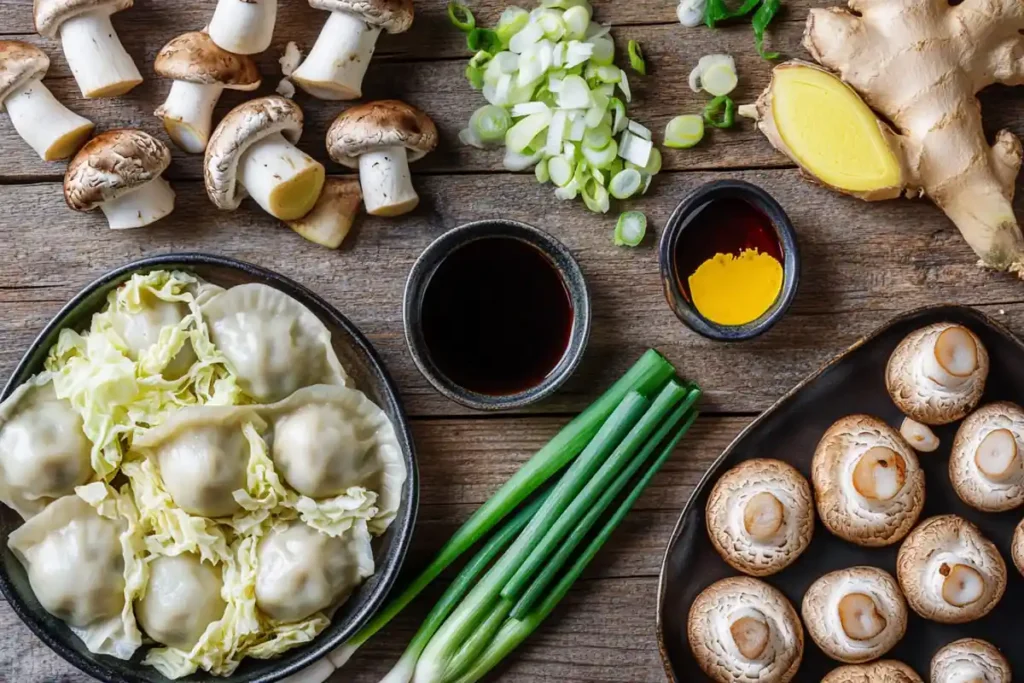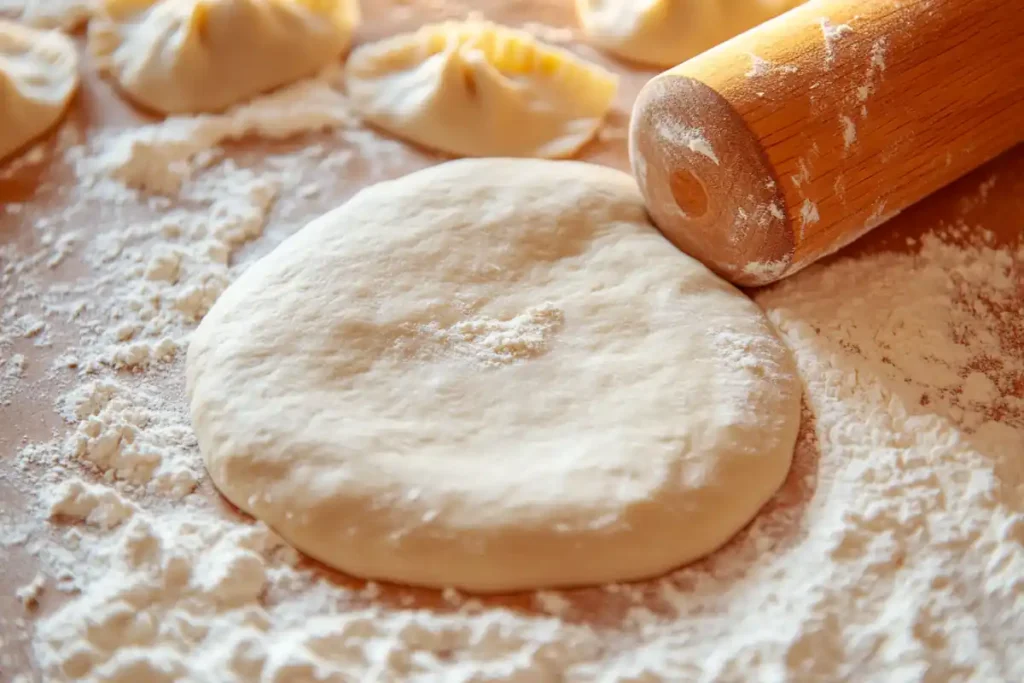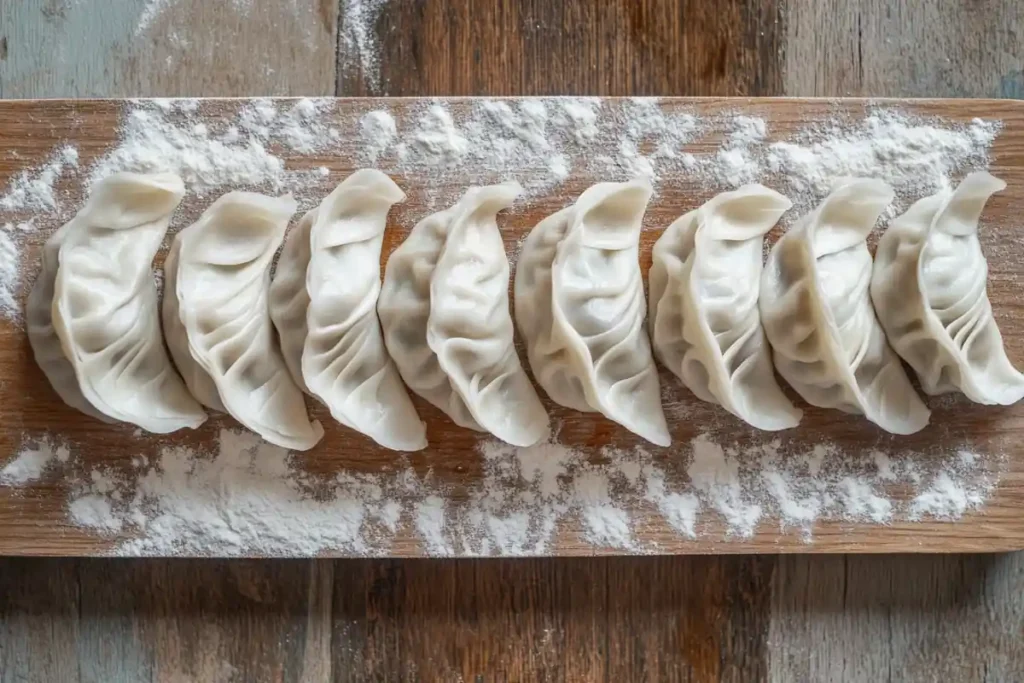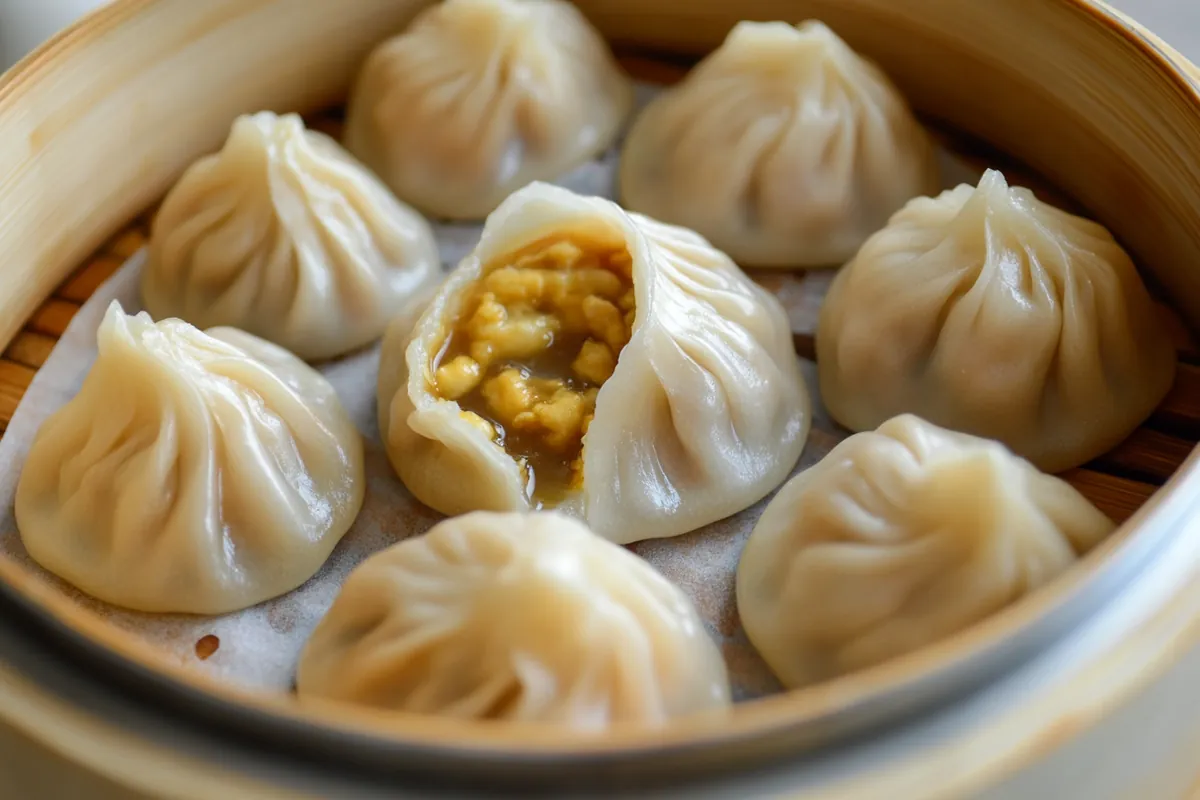Craving something warm, comforting, and packed with flavor? Vegetarian soup dumplings are the perfect bite-sized treat, bursting with delicious broth and a savory plant-based filling. These dumplings, inspired by the famous xiaolongbao, offer a meatless alternative without sacrificing taste or texture.
In this guide, we’ll walk you through everything you need to know about making vegetarian soup dumplings from scratch. From their origins to step-by-step preparation, we’ve got you covered. Plus, we’ll share expert tips, serving suggestions, and health benefits to ensure you master this dish like a pro.
Table of Contents
Understanding Vegetarian Soup Dumplings
What Are Soup Dumplings?
Soup dumplings, also known as xiaolongbao, are a type of steamed dumpling filled with a flavorful broth and a delicious stuffing. Traditionally, they contain a gelatinized meat broth that melts into liquid when steamed. However, vegetarian soup dumplings swap the meat for a plant-based, umami-packed filling and a rich, savory veggie broth.
These dumplings originated in China but have gained worldwide popularity due to their unique texture and taste. Unlike traditional dumplings, which are either pan-fried or boiled, these are delicately pleated, steamed to perfection, and served piping hot. The magic? The broth is locked inside, giving each bite a juicy burst of flavor.
The Rise of Vegetarian Variants
As plant-based diets continue to gain traction, food lovers are finding creative ways to recreate classic dishes without meat. Enter: vegetarian xiaolongbao! This version uses nutrient-rich ingredients like mushrooms, tofu, and agar-agar to replicate the signature soupy experience.
Why are these dumplings becoming so popular?
- They offer a healthier, low-fat alternative to traditional meat-based dumplings.
- They cater to vegetarians, vegans, and flexitarians looking for an exciting meal.
- They retain the same texture, rich umami flavor, and delicate mouthfeel as the original.
Whether you’re a seasoned dumpling lover or a newbie, these little pockets of joy will satisfy your cravings without compromising on taste. Now that you know the basics, let’s explore their history and how they evolved into the vegetarian-friendly version we love today!
History and Cultural Significance of Vegetarian Soup Dumplings
Origins of Soup Dumplings
Soup dumplings, or xiaolongbao, trace their roots back to Jiangnan, China, particularly in Shanghai and Wuxi. These bite-sized delights have been a staple of Chinese cuisine for centuries, known for their thin, delicate wrappers and their signature soupy filling.
Traditionally, pork or crab meat was the main ingredient, combined with gelatinized broth that melted when steamed. Over time, as global culinary preferences evolved, so did the demand for vegetarian and vegan versions of this classic dish.
The transformation of xiaolongbao into a meat-free, plant-based alternative was driven by:
- The rise of vegetarianism and veganism worldwide.
- The search for healthier, low-fat versions of traditional recipes.
- The need for more inclusive dining options that cater to different dietary restrictions.
Today, vegetarian soup dumplings are crafted using natural, umami-rich ingredients like mushrooms, tofu, and plant-based broths, offering the same irresistible taste and texture as the original.
Regional Variations of Vegetarian Dumplings
While Shanghai is the birthplace of xiaolongbao, other regions and cultures have their own versions of soup-filled and steamed dumplings.
Chinese Variants
China has multiple dumpling styles, but vegetarian soup dumplings remain unique due to their delicate wrappers and signature broth-filled interior. While traditional dumplings like jiaozi and baozi are popular, xiaolongbao stand out because of their thin dough and soup-like consistency inside.
Tibetan and Nepalese Momos
Tibetan and Nepalese momos are another variation of dumplings, often stuffed with vegetarian fillings like cabbage, paneer, or mushrooms. Unlike xiaolongbao, which contain broth inside, momos are usually paired with flavorful dipping sauces to add moisture.
Korean Mandu-Guk
In Korea, mandu-guk is a traditional dumpling soup where dumplings are boiled and served in a savory broth. The vegetarian version of mandu is filled with tofu, mung bean sprouts, and various vegetables, offering a similar comforting experience to vegetarian soup dumplings.
Across different cultures, dumplings have been adapted to match local tastes and dietary preferences. The vegetarian version of soup dumplings continues to grow in popularity, proving that flavor and tradition can evolve while keeping their roots intact.
Ingredients and Preparation of Vegetarian Soup Dumplings
Essential Components of Vegetarian Soup Dumplings
Making vegetarian soup dumplings from scratch requires three main elements: the dough, the filling, and the soup base. Unlike traditional meat-based dumplings, this version uses plant-based ingredients that mimic the rich umami flavors and gelatinous texture of the broth.

Dough Preparation: The Perfect Wrapper
The dough is soft yet elastic, allowing it to hold the flavorful filling while remaining thin enough to create delicate pleats. The key ingredients are:
- All-purpose flour: Creates the structure of the dumpling skin.
- Warm water: Helps develop gluten for elasticity.
- A pinch of salt: Enhances the flavor and strengthens the dough.
Pro Tip: Knead the dough well and let it rest for at least 30 minutes to improve its texture and pliability.
Vegetarian Fillings: Packed with Umami
To achieve a rich, meaty taste without actual meat, the filling relies on a combination of umami-packed ingredients:
- Mushrooms (shiitake, oyster, or cremini): Provide deep, earthy flavors.
- Firm tofu: Adds protein and texture.
- Napa cabbage: Brings a subtle sweetness and crunch.
- Scallions & garlic: Infuse aromatic flavors.
- Ginger: Adds a hint of warmth and spice.
- Soy sauce & sesame oil: Enhance depth and umami.
Creating the Soup Base: The Secret to the Broth Inside
The magic of vegetarian soup dumplings lies in their soupy center. To replicate the gelatinous broth found in traditional xiaolongbao, we use plant-based gelling agents:
- Agar-agar or vegetable-based gelatin: Helps solidify the broth.
- Vegetable broth (homemade or store-bought): The base of the soup.
- Dried shiitake mushrooms: Boost umami depth.
- Soy sauce & miso paste: Add complexity to the flavor.
Pro Tip: Once the broth is set into a gel, it can be chopped into tiny cubes and mixed into the filling. This ensures that when steamed, the gel melts into a delicious soup inside the dumpling!
Step-by-Step Cooking Guide
1. Making the Dough
- In a large bowl, mix all-purpose flour and a pinch of salt.
- Gradually add warm water while stirring until the dough forms.
- Knead for 10 minutes until smooth, then cover and let it rest for 30 minutes.

2. Preparing the Vegetarian Filling
- Finely chop shiitake mushrooms, tofu, and napa cabbage.
- Sauté mushrooms with garlic, ginger, and scallions in sesame oil.
- Add cabbage, soy sauce, and miso paste, cooking until soft.
- Remove from heat and let cool completely before mixing in the chopped agar-agar broth gel cubes.
3. Assembling the Dumplings
- Roll the dough into a thin sheet, then cut out small circles (about 3 inches in diameter).
- Place a small spoonful of filling in the center of each wrapper.
- Carefully fold and pleat the edges to seal, ensuring no gaps.
Pro Tip: Keep the wrappers thin but sturdy to hold the soup without breaking!

4. Steaming Techniques for Perfect Dumplings
- Line a bamboo steamer with parchment paper or cabbage leaves to prevent sticking.
- Arrange dumplings 1 inch apart to allow even steaming.
- Steam over boiling water for 8-10 minutes until the dumpling skin becomes slightly translucent.
Now, you have perfectly steamed vegetarian soup dumplings, ready to be served! Up next, we’ll explore the best ways to enjoy and pair them with sauces and sides.
Serving Suggestions and Pairings for Vegetarian Soup Dumplings
Traditional Accompaniments: Elevating the Dumpling Experience
No dumpling experience is complete without the right dipping sauces and side dishes. Vegetarian soup dumplings are flavorful on their own, but pairing them with complementary sauces and sides enhances the overall taste and texture.

Best Dipping Sauces for Vegetarian Soup Dumplings
A well-balanced dipping sauce adds an extra layer of tanginess, umami, and spice to each bite. Here are some classic options:
- Soy-Vinegar Sauce: A simple yet flavorful mix of soy sauce, rice vinegar, and a touch of sugar.
- Chili Oil with Garlic: A spicy kick that enhances the dumplings’ umami flavors.
- Ginger-Scallion Sauce: A fresh, aromatic topping that pairs beautifully with the dumplings’ delicate broth.
- Ponzu Sauce: A citrusy, slightly sweet option that adds brightness.
Pro Tip: Combine soy sauce, vinegar, and a few slices of fresh ginger for the authentic xiaolongbao dipping experience!
Classic Side Dishes to Pair with Soup Dumplings
To turn your dumpling meal into a complete dining experience, consider serving them with these delicious vegetarian-friendly sides:
- Steamed Bok Choy: Lightly seasoned with garlic and sesame oil.
- Spicy Cucumber Salad: Refreshing, with a hint of heat.
- Vegetable Hot and Sour Soup: A flavorful and comforting broth to sip between bites.
- Scallion Pancakes: Crispy and flaky, a great contrast to the soft dumplings.
These traditional and modern sides balance the richness of the dumplings while adding variety to the meal.
Modern Twists: Fusion Flavors and Creative Serving Ideas
While vegetarian soup dumplings are typically enjoyed with classic sides and sauces, some creative modern takes have emerged. Here are a few exciting ways to serve them:
Fusion-Inspired Dumpling Sauces
Want to try something new? Experiment with non-traditional sauces to give your dumplings an unexpected yet delicious twist:
- Thai Peanut Sauce: A creamy, nutty dip that complements the umami-rich filling.
- Korean Gochujang Sauce: Spicy and slightly sweet, adding bold flavors.
- Basil-Pesto Sauce: A fusion of Italian and Asian flavors that works surprisingly well.
Innovative Presentations
Beyond the classic bamboo steamer, here are some modern ways to serve dumplings:
- Soup Dumpling Skewers: Skewer dumplings and lightly pan-sear them for a crispy bottom.
- Dumpling Bowls: Serve dumplings over a bed of garlic-infused noodles with extra broth.
- Mini Soup Dumpling Sliders: Place dumplings inside soft bao buns for a unique dumpling-burger hybrid.
Pro Tip: Try pairing your dumplings with iced jasmine tea or a light miso soup for a balanced meal.
Health Benefits and Nutritional Information of Vegetarian Soup Dumplings
Nutritional Profile: What’s Inside a Vegetarian Soup Dumpling?
One of the biggest advantages of vegetarian soup dumplings is their nutrient-packed ingredients. Unlike traditional meat-based dumplings, these are lower in fat yet high in fiber, vitamins, and plant-based protein.
Here’s a breakdown of what you get in a serving of five dumplings:
- Calories: ~180-220 kcal
- Protein: 6-8g (from tofu, mushrooms, and other plant proteins)
- Carbohydrates: 30-35g (from dumpling wrappers)
- Fat: 4-6g (from sesame oil and natural ingredients)
- Fiber: 3-5g (from vegetables and mushrooms)
- Sodium: ~450-600mg (depending on the dipping sauce)
Pro Tip: Opt for whole wheat dumpling wrappers to increase fiber content and make them even healthier!
Health Benefits of Vegetarian Soup Dumplings
Choosing vegetarian soup dumplings over their meat-based counterparts isn’t just about avoiding animal products it’s also about making a smarter, healthier choice. Here’s why:
1. High in Plant-Based Protein
The combination of tofu, mushrooms, and other vegetables provides a great source of plant-based protein, which supports muscle growth and keeps you feeling full longer.
2. Rich in Antioxidants and Minerals
- Shiitake mushrooms are packed with B vitamins, zinc, and selenium, which help strengthen the immune system.
- Ginger and garlic have natural anti-inflammatory properties that support digestion and boost immunity.
3. Lower in Fat and Cholesterol-Free
Unlike traditional soup dumplings, which contain pork or chicken fat, the vegetarian version is significantly lower in saturated fats and completely cholesterol-free. This makes them heart-friendly and easier to digest.
4. Supports Gut Health
The fermented soy products (like miso or soy sauce) used in the filling promote healthy gut bacteria, which improves digestion and boosts metabolism. Plus, the high fiber content from vegetables helps with better digestion.
5. Balanced and Wholesome Meal Option
Since these dumplings contain carbs, protein, and fiber, they provide a well-rounded meal that keeps energy levels stable without excessive calories.
FAQs About Vegetarian Soup Dumplings
1. What are vegetarian soup dumplings made of?
Vegetarian soup dumplings are made with a thin dough wrapper, a plant-based filling, and a flavorful vegetable-based broth that turns into a soup inside the dumpling. The filling usually consists of:
- Mushrooms (shiitake, oyster, or cremini) for deep umami flavor.
- Firm tofu for protein and texture.
- Napa cabbage and scallions for crunch and sweetness.
- Agar-agar or plant-based gelatin to solidify the broth before steaming.
Pro Tip: Adding a dash of miso paste or soy sauce enhances the dumplings’ flavor even more!
2. How do you get the soup inside vegetarian soup dumplings?
The secret to the soupy center lies in gelatinizing the broth before assembling the dumplings. Here’s how:
- Simmer vegetable broth, soy sauce, and dried mushrooms to infuse rich umami flavor.
- Stir in agar-agar or plant-based gelatin while hot, then let it cool.
- Once solidified, cut the gel into tiny cubes and mix them into the filling.
- When steamed, the heat melts the gel, creating the signature soup inside the dumplings.
Pro Tip: Make sure the broth is fully set before cutting it into cubes, or it won’t hold inside the dumplings.
3. Can I freeze vegetarian soup dumplings?
Yes! Vegetarian soup dumplings freeze very well, making them a great make-ahead meal. Here’s how to store them properly:
- Place uncooked dumplings on a tray, making sure they don’t touch.
- Freeze them for 1-2 hours until firm.
- Transfer them to an airtight container or freezer bag and store for up to 3 months.
Pro Tip: Steam frozen dumplings directly from the freezer no need to thaw! Just add 2-3 extra minutes to the steaming time.
4. What dipping sauce pairs best with vegetarian soup dumplings?
The classic dipping sauce for soup dumplings is a soy-vinegar mix with fresh ginger, but there are plenty of variations:
- Soy Sauce + Black Vinegar + Ginger (Traditional Shanghai-style)
- Chili Oil + Garlic (For a spicy kick)
- Ponzu Sauce (For a citrusy twist)
- Thai Peanut Sauce (For a fusion-style dip)
Pro Tip: Mix soy sauce with a dash of sesame oil for a nutty, aromatic finish.
Embracing Vegetarian Soup Dumplings
A Culinary Delight for Everyone
Vegetarian soup dumplings aren’t just a delicious alternative to their meat-filled counterparts—they’re a flavor-packed, nutrient-rich dish that satisfies every craving. Whether you’re a long-time dumpling lover or a first-time cook, these dumplings are a perfect blend of tradition and innovation.
Why should you try making them at home?
- They’re healthier, with lower fat and cholesterol-free ingredients.
- They’re plant-based, making them suitable for vegetarians and vegans.
- They’re fun to make, offering a hands-on culinary experience.
From their delicate, thin wrappers to the bursting umami broth inside, these dumplings offer a comforting, restaurant-quality experience right from your kitchen.
Encouragement to Experiment
Cooking is an adventure, and these dumplings are the perfect dish to experiment with:
- Try different mushrooms for a variety of umami flavors.
- Adjust the dipping sauces for a personalized taste.
- Add spices like Sichuan peppercorns for an extra kick.
Pro Tip: Don’t be afraid to get creative with fillings, from miso-infused tofu to finely chopped spinach for extra nutrients!
Final Thoughts
By making vegetarian soup dumplings, you’re not just preparing a meal you’re embracing a cultural experience, a mindful cooking process, and a delicious tradition. Whether served as a comforting weeknight meal or an impressive dish for guests, these dumplings will always be a hit!
So, gather your ingredients, roll out your dough, and get steaming a world of savory, soup-filled dumpling perfection awaits!

